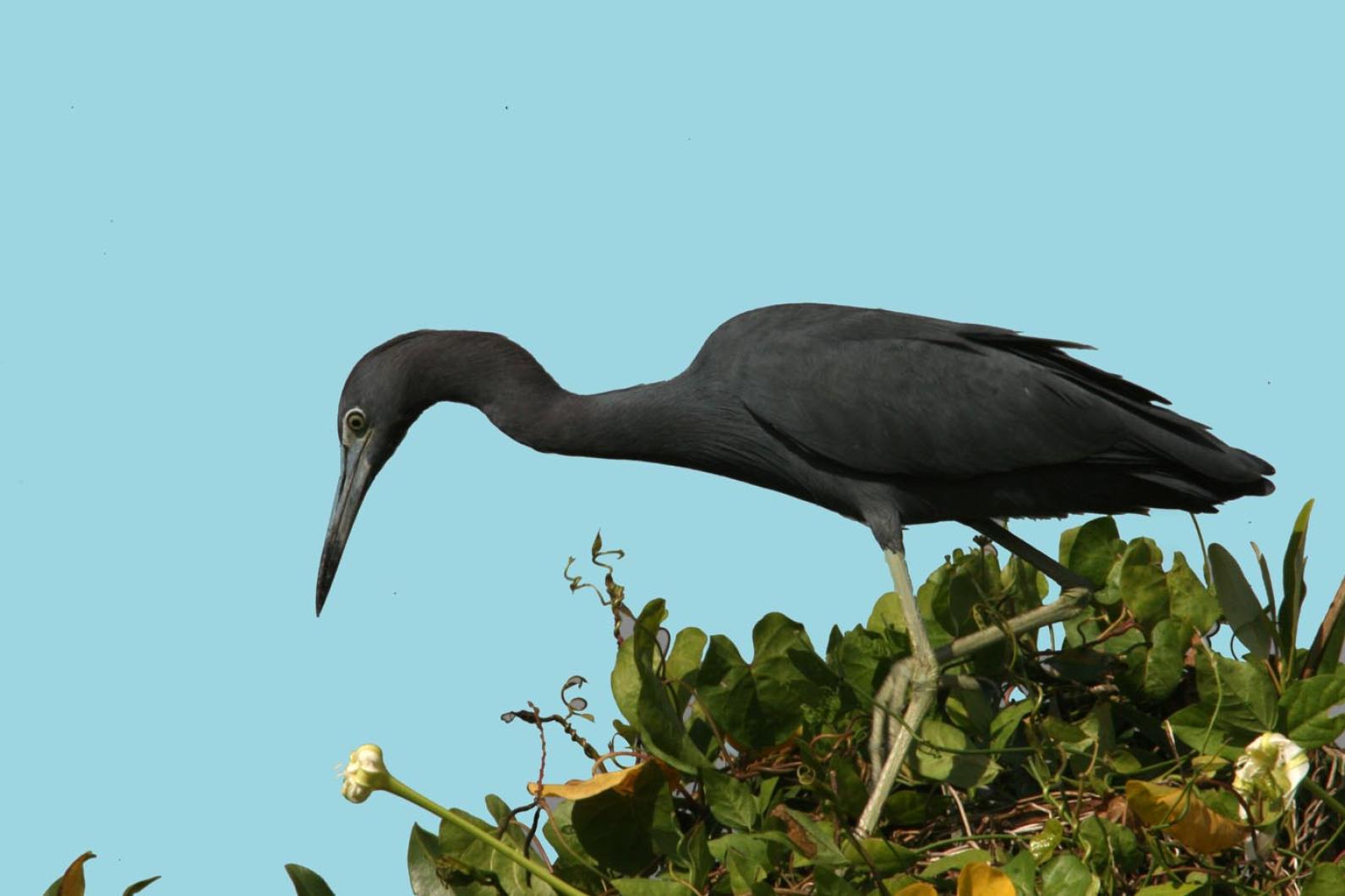We climbed off the plane wearing turtlenecks, fleece jackets and hats and were hit by blue skies, sunshine and temperatures in the 70s. We were in Savannah, Ga., on our way to participate in St. Catherine’s Island’s 21st Christmas Bird Count.
“It’s time again to visit with old friends, make some new ones, and count those beautiful birds in the sky, on the waters and in the trees.” So reads the cover page of the invitation to this annual event.
And an event it is. Flip and I spent Thursday night in Savannah sampling some of the local cuisine. Ah, the land of She-Crab soup and shrimp makes one’s mouth water just reading the menu.
Early Friday morning, we headed south to Midway, Ga., where we joined some of the birding crew at a local restaurant for lunch: a shrimp sandwich for one, peel-and-eat shrimp for the other. We caught up with old friends as to what they had been doing for work and for fun. A bit before one o’clock, we headed to the Mainland Dock for St. Catherine’s Island where all the crew (we were 36 strong) loaded binoculars, spotting scopes, boots, bird books, iPods or tape recorders, liquid refreshments and a change of clothes onto one boat. We split up between three boats and off we went on the Newport River, across the Intracoastal Waterway into Camp and Factory creeks and finally onto the docks of St. Catherine’s Island.
It is an honor for Flip and me to be asked to this Christmas Bird Count. St. Catherine’s Island is privately owned and not opened to the public. The owner is the St. Catherine’s Island Foundation, which aims to promote the conservation of natural resources, survival of endangered species and preservation of historic sites as well as expanding human knowledge in the fields of archaeology, botany, ecology, natural history, zoology and other scientific and educational disciplines. We were part of a group that surveys the bird population annually.
St. Catherine’s Island is about ten miles long and a little over three miles wide at its girth. Most of the island is only about a mile wide. More than half the island is tidal marsh and wetlands inside a sandy barrier beach of about ten miles. There are over 14,000 acres total and the center is a forest consisting primarily of southern pine species and live oaks.
But let’s move on to the important stuff. We disembarked from the boats and collected our gear and went to our cabins. Then we met to find out what time the meals would be served, which team we were on and what our duties were for the weekend. Then we split up and used a combination of vans, all-terrain vehicles or trucks and went out to scout our areas.
St. Catherine’s was divided into five sections. Flip and I joined Brad Winn’s team to cover Section Five, which was mostly barrier beach so we would be working primarily with shorebirds, herons, gulls and sea ducks.
On Saturday morning we were up at 4:30 to help with breakfast and pack our lunches. We were out in our van by 6:30 a.m., headed across the island to our territory. Unfortunately the weather had turned. Now it was cloudy and cool. Glad we had our fleeces with us. We were able to bird most of the morning with decent weather, but at noon it started to rain. By the end of the day, I felt as though I was a clothing model. First it would rain and on would go the rain gear, then it would stop and off it would come — on again, off again all day! At 5:45 p.m., we counted our last birds, six hooded mergansers, and returned to the cabins for a quick shower, dry shoes and socks. Unlike most Christmas Bird Counts, the St. Catherine’s is much more civilized. We had dinner and a bit of a party the night of the count and after a leisurely breakfast the next morning, we do a tally of the birds we saw.
The total number of species we saw during Saturday’s count was 132. Our team spotted 91 species, which we claimed was because of our superior birding ability. That was true, but also we had the biggest team and the biggest territory.
Participating in other Christmas Bird Counts other than your own is helpful to that count, fun, good practice and in this case an opportunity to see birds that are not on our Vineyard Christmas Bird Count. Vineyard counters do not see brown pelicans, little blue, tricolored or green herons, wood storks or clapper or king rails. My favorite St. Catherine’s birds, however, are Carolina chickadees, which have a different call and slightly different markings than our black-capped chickadees, and brown nuthatches, neither of which has ever been seen on the Vineyard. A white-eyed vireo and a yellow-throated warbler are two others that are rare on the Vineyard in the spring, summer and fall, but have never been seen on our Christmas count, nor has the large boat-tailed grackle or the pileated woodpecker of the south. We saw all four of these on St. Catherine’s.
The real surprise for the Georgian birders was spotting a red-breasted nuthatch. They had only seen this species on three other of their Christmas Bird Counts. Don’t forget our Vineyard Christmas Bird Count on Jan. 5.





Comments
Comment policy »